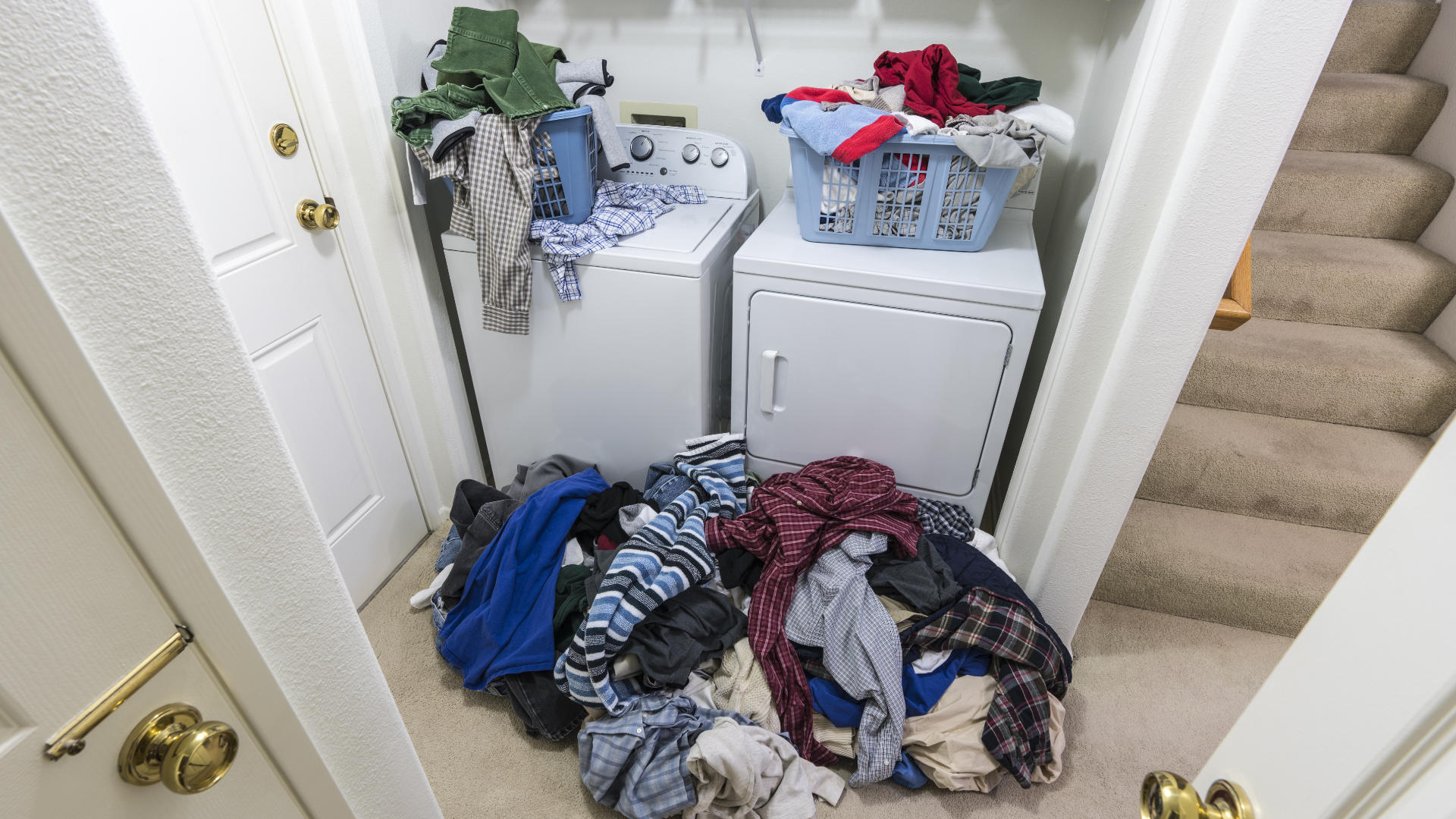
Dryers are a convenient and useful appliance to have in your home. Unfortunately, sometimes they leak water. A dryer with a water issue can affect its performance and leave a puddle on your laundry room floor. Water issues can also damage its electrical components. If your dryer is leaking water, it is recommended you stop using it and get it fixed.
A leaky dryer is most often caused by condensation, usually the result of an issue with the ventilation exhaust. The following guide outlines how problems with a dryer’s ventilation can cause water problems and explains how to fix them. If you have a condenser dryer, checking the condensate pump may solve your issue.
1. Ventilation Blockage
Blocked ventilation is often the reason why a dryer is leaking water. The dryer works by heating air and distributing it around the drum to dry the clothes. If the dryer is unable to vent the warm air, it condenses and causes water to collect in the dryer. The first thing to check is the ventilation hose coming out of your dryer. Make sure it has no kinks that may be blocking the airflow. Some dryers also have a lint screen attached to the ventilation hose, so make sure to check that for lint blockages.
The blockage is usually caused by stray lint and fabric in the ventilation, which, combined with the damp air, causes clumps to form. If you can access the outside vent, you can check for ventilation blockages by holding your hand up to the vent to check the airflow. It is recommended that the dryer’s ventilation system be cleaned at least once a year to avoid blockages.
Disconnecting the ventilation hose from the dryer and cleaning out this area can solve the problem. A dryer vent cleaning kit can be purchased from a hardware store, or a vacuum extension can also be used. The panel where the ventilation hose goes into the dryer can also be removed. Before removing the panel, make sure the dryer is disconnected from the power. When you reconnect the exhaust hose, make sure it does not have any twists or bends that could prevent airflow.
2. Vent Duct Insulation
A dryer that is leaking is sometimes the result of condensation or ice forming because of a lack of insulation around the dryer exhaust duct. The issue is common in colder climates, where the warm air coming out of the dryer is more likely to be affected by colder air from outside. Ventilation ducts without proper insulation running through a cold area, such as a basement, can also cause this issue. To prevent condensation or ice from forming, make sure the dryer exhaust duct is properly insulated.
3. Holes in the Ventilation Duct
If the ventilation has any holes or cracks in it, then this could be causing the dryer to leak water. Condensation could be coming in through the damaged pipe and ending up in the dryer. If you discover a hole or a crack, it is recommended that the duct be replaced. If the hole is small, you could try heavy-duty cooling and heating tape to fix it.
4. Defective Vent Flap
Most dryers have a vent flap at the exit point of the dryer’s ventilation duct. The flap is designed to stop outside elements, such as rain, snow, and leaves, from getting into the ventilation. The flapper opens when air needs to be let out and should remain closed at all other times. If the vent flap is defective, it may be letting rain, ice, or snow into the ventilation pipe, causing water to get into your dryer. If the vent is not opening, perhaps because it is blocked, then it will likely be causing condensation to form in the pipe.
If you can access the outside vent, check to see if it opens and that it is not blocked. If the flap is damaged, replace it.
5. Condenser Dryer
Condenser dryers are a great alternative if you are unable to connect a dryer to an external duct. Instead of using an exhaust vent, condenser dryers remove the moisture from the warm air and collect it in a tank. If a condenser dryer is leaking, it may be due to an issue with the condenser system.
The first thing to check is that the condenser tank is empty and not leaking. Next, check the condensate pump and hoses for damage. Before removing the pump, make sure to disconnect the dryer from the power. If you suspect a faulty pump is causing the water leakage, you can check the pump for continuity and replace it if need be.
6. Vent Exhaust Indoors
If your dryer ventilation exhausts indoors, perhaps into a garage, it is likely to cause moisture problems. The source of your dryer’s leakage could be coming from the condensation caused by this ventilation setup. Check the exhaust vent, and if it is causing condensation, consider relocating it to an outside location.
7. Configuration of Ventilation Duct
To prevent condensation from building up in the ventilation duct, it pays to check its configuration. To protect against condensation issues, it should be as horizontal and straight as possible. Too many bends in the duct also make it easier for lint to cause a blockage. Issues with the ventilation will also be caused if ribbed ducting or plastic is used. A rigid metal duct, galvanized steel or aluminum, is the recommended material for the concealed part of your dryer’s ventilation duct.

Your Guide to Whirlpool Microwave Replacement Parts

What to Do When Your Kenmore Dryer Won’t Start

How to Resolve the LG Washer LE Error Code

Why Does My Oven Smell Like Gas? Causes and What to Do

Maytag Dryer Not Heating? Here’s How to Fix It

6 Common Reasons Your Speed Queen Dryer Isn’t Heating

8 Reasons Your Samsung Refrigerator Is Not Cooling

9 Most Reliable Washer and Dryer Brands

How to Get Ink out of Your Dryer the Easy Way

Why Is My Fridge Making Noise That Stops When the Door Is Open?

Frigidaire Refrigerator Error Code H1: Causes & Solutions

How to Clean a Dryer Vent Without Moving the Dryer

9 Reasons Your LG Refrigerator Isn’t Cooling

LG Refrigerator Not Making Ice? Here’s What To Do!


